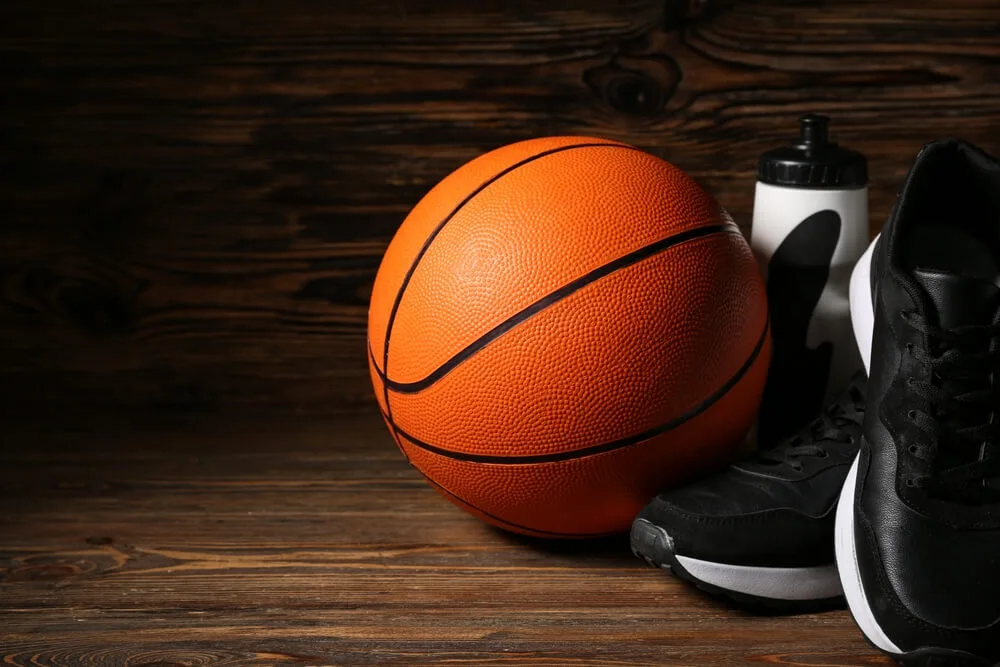How to Choose Basketball Shoes Based on Your Playing Style?

In the fast-paced and physically demanding world of professional basketball, the right footwear isn’t just a matter of style—it’s a critical component of performance and injury prevention. Whether you’re cutting to the basket, leaping for a rebound, or defending the perimeter, the shoes you wear can significantly impact your game. With so many options available, choosing the right basketball shoes that align with your playing style can be overwhelming.
This guide aims to help you navigate this decision by breaking down the essentials of basketball shoe selection based on different playing styles. Whether you’re a quick and agile point guard, a high-flying forward, or a powerful center, understanding how your role on the court affects your footwear needs is crucial. By the end of this post, you’ll have a clear understanding of what to look for in a basketball shoe that complements your unique style of play, helping you perform at your best every time you hit the court.
1. Understanding Your Playing Style
Choosing the right basketball shoes starts with a solid understanding of your playing style, which is typically influenced by the position you play on the court. Each position in the NBA demands different physical attributes and movements, making it essential to select shoes that cater specifically to those needs.
i. Point Guard
Point guards are often the quickest players on the court, responsible for directing the team’s offense. Their game relies heavily on speed, agility, and quick directional changes. Therefore, point guards need lightweight shoes with excellent traction and support. The right shoes should allow them to make sharp cuts and quick stops without losing balance or grip.
ii. Shooting Guard
Shooting guards require a balance of agility and stability. They need to be quick enough to get open for shots while also being able to drive to the basket and defend against opposing players. Shoes for shooting guards should offer a blend of lightweight design for mobility and enough cushioning for impact protection, especially when making explosive movements.
iii. Small Forward
Small forwards are versatile players who often act as a bridge between guards and big men. Their role demands both speed and strength, as they need to score from the perimeter, drive inside, and defend multiple positions. Versatility is key, so small forwards benefit from shoes that provide a combination of cushioning, support, and flexibility to adapt to various playing conditions.
iv. Power Forward
Power forwards typically play a physical game, requiring shoes that can handle the rigors of rebounding, posting up, and playing tough defense. They need shoes with extra cushioning to absorb impact and high-top designs to provide added ankle support during physical play.
v. Center
Centers are the anchors of the team, dominating the paint with their size and strength. Their game involves blocking shots, securing rebounds, and making powerful moves in the post. High-top shoes with maximum cushioning and support are ideal for centers, as they need to protect their ankles and absorb the high impact that comes with frequent jumping and landing.
Importance of Style-Specific Shoes: Understanding your playing style and the specific demands of your position is crucial when selecting basketball shoes. Each position requires different features, such as enhanced traction for guards, extra cushioning for forwards, or superior ankle support for centers. By choosing shoes tailored to your playing style, you ensure that your footwear enhances your strengths and mitigates potential weaknesses, ultimately improving your performance on the court.
2. Key Features to Consider in Basketball Shoes
When selecting the right basketball shoes, it’s essential to consider several key features that directly impact your performance, comfort, and safety on the court. Each of these elements plays a crucial role in ensuring that your footwear complements your playing style and withstands the demands of the game.
i. Cushioning
Cushioning is one of the most important aspects of basketball shoes. It provides impact protection, which is vital for absorbing the shock that comes with constant jumping, sprinting, and abrupt stops. Quality cushioning not only enhances comfort but also reduces the risk of injury, particularly in high-impact areas like the heels and forefoot. Whether you prefer a softer, more responsive feel or a firmer base for stability, finding the right level of cushioning can greatly influence your game.
ii. Support and Stability
Support and stability are critical for maintaining balance and preventing injuries, especially in the ankles. Basketball shoes with a well-structured upper and midsole provide the necessary support to keep your foot secure during lateral movements, jumps, and pivots. High-top designs are particularly beneficial for players who need additional ankle support, while low-tops offer greater freedom of movement for those who prioritize speed and agility. Ensuring that your shoes provide adequate support tailored to your playing style is essential for maintaining performance and avoiding common basketball injuries.
iii. Traction
Traction is key to executing quick cuts, explosive drives, and sudden stops on the court. The outsole of the shoe, typically made from rubber, is designed to grip the floor and provide the necessary friction for dynamic movements. A good basketball shoe should have a durable outsole with a tread pattern that ensures excellent grip on both indoor and outdoor surfaces. Without proper traction, you risk slipping, losing control, and compromising your performance.
iv. Fit and Comfort
A proper fit is non-negotiable when it comes to basketball shoes. Ill-fitting shoes can lead to blisters, discomfort, and even injury, all of which can hinder your performance. When trying on basketball shoes, make sure they fit snugly without being too tight, and provide enough room in the toe box to prevent pinching. The right fit will keep your feet secure and comfortable throughout the game, allowing you to focus on your play rather than your footwear.
v. Durability
Durability is a key consideration, especially for players who spend a lot of time on the court. Basketball shoes endure significant wear and tear from constant running, jumping, and quick movements. Investing in a pair of shoes made from high-quality materials ensures that they will last longer and maintain their performance features over time. Durable shoes not only save you money in the long run but also provide consistent support and protection throughout their lifespan.
3. Choosing Shoes Based on Playing Style
Selecting basketball shoes that align with your playing style is essential for optimizing your performance on the court. Each position demands specific attributes from footwear, whether it’s speed, support, or stability. Here’s a breakdown of the ideal shoe characteristics for different playing styles:
i. For Point Guards
Point guards are the floor generals, responsible for directing the offense and making quick decisions. Their game is built on speed, agility, and sharp directional changes. Lightweight shoes with excellent traction and support are crucial for point guards. These features help them stay quick on their feet, make sharp cuts, and stop on a dime without losing balance. A lower-profile shoe that allows for rapid movements and maintains a strong grip on the court is ideal.
ii. For Shooting Guards
Shooting guards need to be versatile, capable of shooting from range, driving to the basket, and defending against perimeter threats. Shoes that offer a balance between agility and support are essential for shooting guards. They should provide enough cushioning for explosive movements and comfort for extended play, while also being lightweight enough to allow for quick movements. Look for shoes that provide stability in the midfoot area while maintaining flexibility for slashing to the basket.
iii. For Small Forwards
Small forwards are often tasked with playing both inside and outside, making them some of the most versatile players on the court. They need versatile shoes that provide cushioning and support for an all-around game. A shoe that combines good ankle support with responsive cushioning is ideal, as it will allow small forwards to perform well in various situations, from shooting to driving to defending. A medium-height shoe that offers a blend of mobility and protection is often the best choice.
iv. For Power Forwards
Power forwards play a physical game, often battling in the post for rebounds and defending larger opponents. Sturdy shoes with extra cushioning are necessary for these players to absorb the impact of physical play and frequent jumping. High-top shoes are often preferred for the added ankle support, which helps prevent injuries during intense post play. Additionally, strong traction is important for maintaining stability during powerful moves under the basket.
v. For Centers
Centers are the anchors in the paint, responsible for shot-blocking, rebounding, and playing tough defense. They need high-top shoes with maximum support and cushioning to protect their ankles and knees during the rigors of post play and jumping. These shoes should offer the most protection and stability, with durable materials that can withstand the physical demands of a center’s game. A solid, well-cushioned shoe helps centers maintain their presence in the paint while minimizing the risk of injury.
By choosing shoes that match your playing style, you ensure that your footwear enhances your natural abilities and protects you from the unique physical demands of your position. Whether you’re a quick point guard or a dominant center, the right shoes can elevate your game and keep you performing at your best.
4. Tips for Trying on and Testing Basketball Shoes
Choosing the right basketball shoes doesn’t end with picking the right model. Ensuring a proper fit and testing the shoes before hitting the court is crucial to maximizing performance and comfort. Here are some tips for trying on and testing basketball shoes to ensure you make the best choice.
Shoe Shopping Tips
When shopping for basketball shoes, timing and approach matter:
- Shop Later in the Day: Feet tend to swell throughout the day, so it’s best to try on shoes later in the afternoon or evening when your feet are at their largest. This helps ensure the shoes will be comfortable even during extended wear.
- Wear Basketball Socks: Bring along the same type of socks you plan to wear while playing basketball. This ensures that you get an accurate fit when trying on shoes, as different sock thicknesses can affect how the shoe feels.
- Consider Your Playing Surface: If possible, try to shop at stores with courts or hardwood flooring available for testing. This allows you to get a feel for how the shoes will perform on the actual surface where you’ll be playing.
Once you’ve selected a pair, it’s essential to properly test them:
- Check the Fit: Make sure there’s enough space (about a thumb’s width) between your longest toe and the end of the shoe. The shoes should feel snug around the midfoot without being too tight. Ensure that the heel is locked in place and doesn’t slip as you move.
- Simulate Basketball Movements: Don’t just walk around the store—simulate movements like cutting, jumping, and sprinting. Pay attention to how the shoes handle directional changes and whether they provide the necessary support and cushioning.
- Test the Traction: If you’re able to, test the traction on a court or a similar surface. The shoes should grip well and allow for quick stops and starts without sliding. This is especially important for guards and players who rely on agility.

